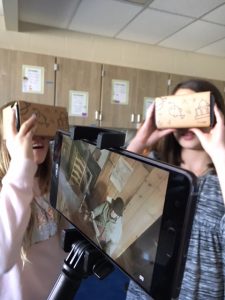Admin for this challenge
- Thanks to all those students, teachers and commenters who have been checking the student list for students mentioned more than once. If you haven’t checked yet, please make sure you are only listed once.
- Commenters and I have visited hundreds of blogs recently. We have left a comment, or flipped the post to our magazine or have mentioned your post in the next blogging challenge post. Have you found one of your posts mentioned yet? Remember you need to fill in the form each week for one of us to visit and comment.
- You can also visit the posts each week as I now have a link to them on the sidebar – any with a yellow cell has not been visited yet by an official commenter, so please go to these first.
Students and teachers please read this before doing the activities
This week’s activities are going to be fun but first there are some things you need to know so please read carefully.
I have been visiting many blogs over the last few weeks. Some students new to blogging have been writing some great posts while others who have been blogging for a bit longer have started adding videos and images to their posts.
Yes, this week we deal with using images, videos, music and sounds in your posts.
But can’t I use any image, music or sound that is on the internet?
No, you must use creative commons, public domain or in some cases the fair use rule.
But where can I find these images, music and sounds? Can’t I use anything when I google an image?
No, your blog is public so you must use creative commons images, sounds, music and videos.
Sue Waters over at Edublogs has created a student blogging bootcamp with lots of interesting posts. Check these out (mainly Edublogs but many also relate to other platforms.) Other posts found here for Blogger blogs.
Other places to find information on creative commons
Images
Make sure you check out the links in the Tools to Use symbaloo above the header
Video
Check out Sue Water’s post from the student blogging bootcamp where she shows how to create and upload your own videos as well as where to find videos and how to embed on your blog posts.
Music and sound effects
Jamendo, CCMixter, post with 14 websites for music, post with 20+ websites for music, post with 55+ sites with sound effects
Now for the activities for this week
Activity 1. Do some more research on the topic of attribution and licenses and perhaps create your own class videoabout using images, music and videos in class.
This video is the reaction of students in Mrs Yollis’ class when she mislabelled their artwork. How would you have felt?
Activity 2. Take a photo or find an image or piece of music. Add it to your post (with attribution) and write a poem relating to the image or music. Invite your readers to write their own poems. Here is Fernando’s example, Samantha is confused
Activity 3. Similar to activity 2. Take a photo or find an interesting landscape image (include attribution) or create the beginning of a video. Write the beginning of a story relating to your image or video. Remember to include a conflict of some sort between your characters. Invite your readers to finish the story. How many different endings can you get? Which ending do you prefer? You might need to visit some other bloggers and invite them to finish your story. Remember to leave the URL of your post for them to click on.
Activity 4. Write a sentence using just images – no words OR find 5 images that create a story – again no words only the attribution for each image.
Activity 5. Create a slideshow, photo gallery or poster about your interests to add to your about me page or as a separate post. Your final slide should include attribution for each image. Noah created a great gallery with captions
Activity 6. Create your own images and add to a post of your choice. In your post add a link to the website or tool you used to create your image.
Other options for creating your own images include:
- MakeBeliefsComix.com
- ToonDoo
- Befunky
- Big HugeLabs
- PhotoFunia
- Wordle
Mixing up your images using these types of tools can really spice up your posts! Leave a comment on this post, if you or your class can recommend some other image sites to add to this list.
Activity 7. Zoom out from an image
We first tried this activity in the challenge in September 2010. Choose a picture, and have your readers zoom out, so to speak, by leaving comments. Check out the example from Huzzah who finished their story. If doing this activity, include the word ‘zoom’ in your title so I can find it easily. Remember to give attribution. Most important here is to read previous comments, so you can add to the story.
Check out these zoom pictures: Becky, Jacqueline, Abbey
Activity 8. Go back to previous posts
If you have used images in any previous posts you have written, then you are ethically obliged to give the correct attribution or take the image out of the post if it does not have the right creative commons license.
Activity 9. Create a jigsaw from your image. Mrs Schmidt’s class has done this using Jigsaw Planet . Here is her explanation
Last week (2014) my students made some jigsaw puzzles about famous places in our area. First each student created one Power Point Slide showing a photo and some facts about a location in our area. They saved the slide as a JPEG and then uploaded it to Jigsaw Planet. Once the puzzle was created, they published a link to it on their Kidblog. Click on Niamh’s puzzle link. Maggie created a tough jigsaw. Anisha created a jigsaw from her avatar.
Activity 10. Make a game using images. This class in Australia based their game on 4pics 1 word app.
Still got time left this week:
- Check out posts from other students and classes – see link in sidebar – any with a yellow cell has not had an official commenter visit yet
- Check out some good avatar posts I found in the list and I mention below
- Teachers – have you started visiting blogs listed on the class list of blogs? Maybe pair up your students with those on the other class blogs.
- Reply to comments on your own blog
- Start using tags and categories with each post you write to make it easier for people to find posts on certain topics. Make sure you have the tags and categories widgets in your sidebar.
Student posts
Rajyashoril, Hailee, Yasha17, Kofi, Nicholas, Claire Louise, Jude, Jordan,
Some class posts
Mrs Scales, Windy Woods Farm homeschool, Mrs Vazquez,
If you speak and write Spanish or want to use a translate widget, why not visit Doctora Merrills blog to leave some comments?
Here are the instructions for adding links to your sidebars.
Have at least five other student and/or class blogs linked on your sidebar – students from other classes and schools – not your own. We will need this for a game we play in a couple of weeks.
Try to have a few different link categories like
- My Overseas Friends
- Other Class Blogs
Having lots of links to student blogs from other countries will help spread the game.
Edublogs, Blogger, Kidblog – not sure if this widget goes on the class page or each student page
Flipboard magazine – are you in there yet?
I will only be adding posts to the flipboard magazine that:
- are written in paragraphs
- have been proofread
- include an image, sound or video with attribution
So make sure you have taken note of this week’s learning about creative commons.
Most important learning from this week’s challenge is:
Use creative commons images or public domain, not just any image on the net. Always include attribution of where you found the image. Compfight plugin does this for you.
PS If you have done the blogging challenge before, you will find these activities are nearly the same each time. If you have ideas for different activities please leave a comment on this post.
If you do lots of activities this week, only include the best 2 on the Google form, otherwise we will not have enough commenters to visit.
READ MORE
 Google visited Blue Ball Elementary on January 31, 2018. Students and teachers in grades 2 through 6 experienced Google Expeditions, which transported them from the limits of the solar system to the depths of the Caribbean through virtual reality field trips. Teachers led the field trips, created by Google, through the use of a guided lesson plan and content-related notes on a tablet. Students used virtual reality goggles and monopod to travel to places they may never have experienced in their lifetime. The teachers, who had volunteered for this opportunity, were excited at the potential applications for their classrooms through this new technology. Mr. Arena a 4th grade teacher at Blue Ball says, “This new technology is a fantastic educational tool which helps create excitement and engagement for a vast amount of topics.” The district welcomed technology coaches from other area school districts to observe this pilot program. Many left with new ideas to bring back to their schools. “I loved seeing the excitement in each student and hearing the wows over and over again from class after class. Students were wowed by what they saw and experienced! Talk about bringing the real world into today’s classrooms. These expeditions provide students with virtual opportunities to travel to places they might never have the experience to see in reality” says Ken Zimmerman, Instructional Technology Specialist at Lancaster-Lebanon Intermediate Unit 13.
Google visited Blue Ball Elementary on January 31, 2018. Students and teachers in grades 2 through 6 experienced Google Expeditions, which transported them from the limits of the solar system to the depths of the Caribbean through virtual reality field trips. Teachers led the field trips, created by Google, through the use of a guided lesson plan and content-related notes on a tablet. Students used virtual reality goggles and monopod to travel to places they may never have experienced in their lifetime. The teachers, who had volunteered for this opportunity, were excited at the potential applications for their classrooms through this new technology. Mr. Arena a 4th grade teacher at Blue Ball says, “This new technology is a fantastic educational tool which helps create excitement and engagement for a vast amount of topics.” The district welcomed technology coaches from other area school districts to observe this pilot program. Many left with new ideas to bring back to their schools. “I loved seeing the excitement in each student and hearing the wows over and over again from class after class. Students were wowed by what they saw and experienced! Talk about bringing the real world into today’s classrooms. These expeditions provide students with virtual opportunities to travel to places they might never have the experience to see in reality” says Ken Zimmerman, Instructional Technology Specialist at Lancaster-Lebanon Intermediate Unit 13.






